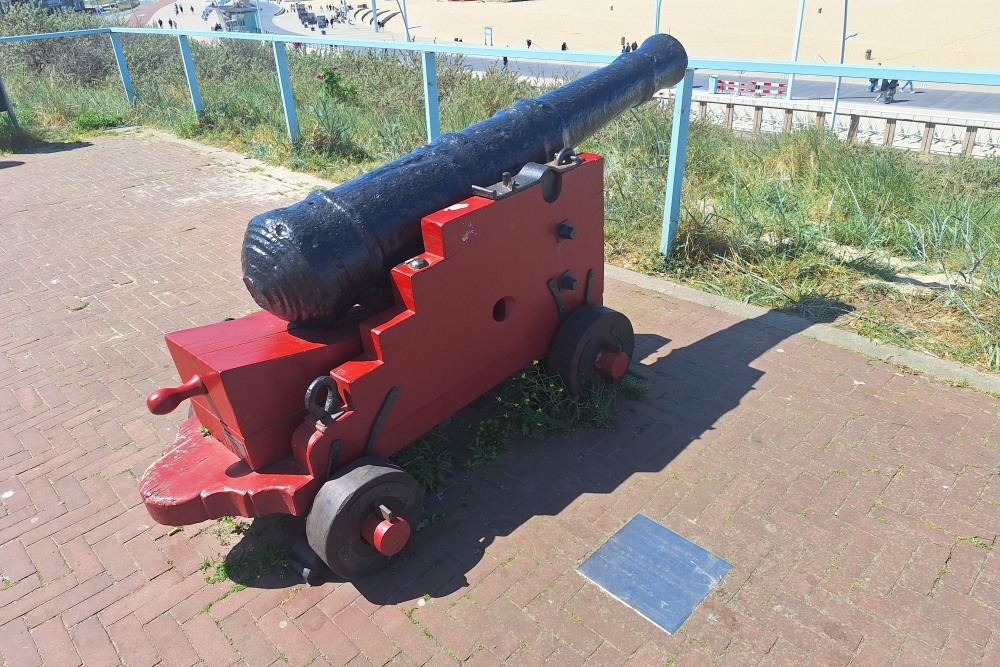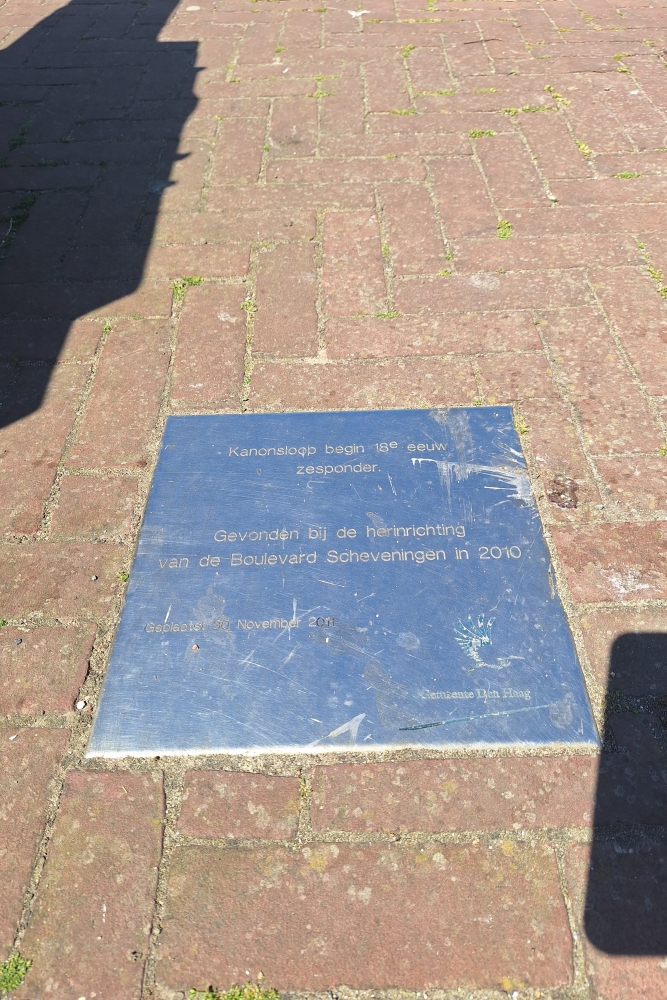Gun Signal Station Scheveningen
On Wednesday afternoon, 28 July 2010, an employee of a construction company made a remarkable discovery at the bottom of the embankment of the cobblestone slope on Zeekant, near the Boulevard Hotel in Scheveningen. During construction work, a centuries-old cast iron cannon emerged, which had been hidden under the sand for approximately 200 years.
It turned out to be a six-pounder, a type of cannon used around 1800 to defend the Scheveningen signal station. This signal station, a main post in the French defence line along the Dutch coast, was built in 1799 on a dune on the north side of the village. Since then, this dune has been known as the Seinpostduin. Even earlier, in 1794, there were fears of a French landing at Scheveningen. In a hurry, the country's warehouses in Delft were ordered to supply heavy artillery and associated equipment for coastal defence.
After its discovery, the cannon was carefully preserved and restored by the project organisation of the Nieuwe Boulevard Scheveningen. The municipality of The Hague had a historically accurate wooden base made for it, a so-called ‘rolpaard’, based on original examples from that period.
On 30 November 2011, the restored cannon was officially unveiled by alderman Rabin Baldewsingh on the Seinpostduin. The date was chosen symbolically: exactly 198 years earlier, on 30 November 1813, King William I set foot in Scheveningen and the Netherlands became a kingdom once again.
An echo of the Disaster Year of 1672?
It is possible that this cannon even dates back to the Disaster Year of 1672, when the Republic of the Seven United Netherlands was simultaneously attacked by France, England, and the bishops of Münster and Cologne. The inhabitants of Scheveningen also felt the threat. In a petition, they asked the States of Holland for weapons, ammunition and cannons to defend their coastal town.
On 2 August 1673, in the aftermath of this turbulent period, English and French warships lay off the coast of Scheveningen. The enemy attempted to land with small vessels, but encountered fierce resistance. An English *kits*, a light three-masted ship, opened fire on Scheveningen, but was quickly sunk by the cannons positioned in the dunes.
Whether the cannon found actually dates from this period cannot be said with certainty, but the dating and context make it very likely. It could be a tangible reminder of a turbulent time in which Scheveningen played an important role in the defence of the country.
Do you have more information about this location? Inform us!
Source
- Text: RJArmy.nl
- Photos: RJ Army
Nearby
Museum
- Atlantikwall Museum / German Command Bunker 622 Scheveningen - Den Haag
- National Monument Oranjehotel (Orange hotel) - Scheveningen (Den Haag)
- Madurodam Den Haag - Den Haag
Point of interest
- Pension Walda - Scheveningen (Den Haag)
- V-2 Impact Site Westduinweg - Den Haag
- V-2 Impact Site Nieuwe Duinweg - Den Haag
Monument
- War Memorial Scheveningen - Scheveningen (Den Haag)
- Memorial Landing King Willem I - Den Haag
- Soldier of Orangebeach - Scheveningen (Den Haag)
Cemetery
- Commonwealth War Graves The Hague - Den Haag
- Dutch War Graves Den Haag - Den Haag
- Communal Cemetery Kerkhoflaan - Den Haag
Remembrance Stone
- Stumbling Stones Gevers Deynootweg 66 - Den Haag
- Stumbling Stones Gevers Deynootweg 76 - Den Haag
- Stumbling Stones Keizerstraat 65 - Scheveningen (Den Haag)
Fortification
- Markings Pillbox S-3K78 - Den Haag
- Atlantikwall - Regelbau 502 Bunker - Den Haag
- Atlantikwall - Vf2a Group Shelter - Den Haag







